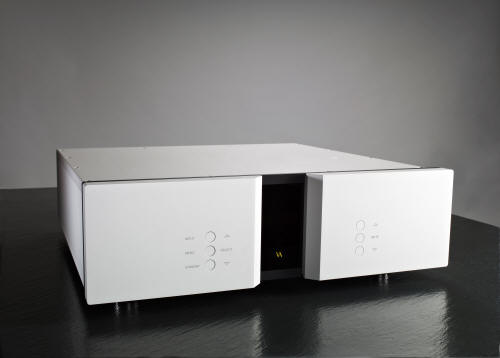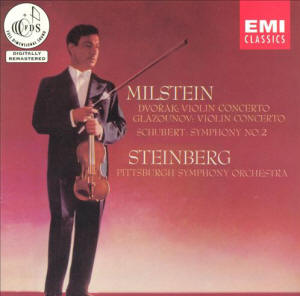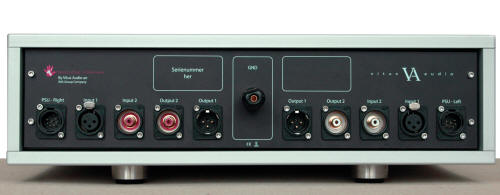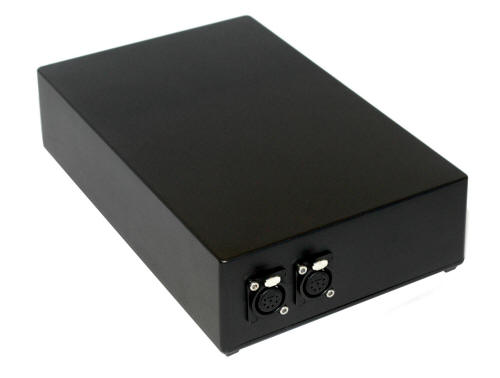|
|
You are reading the older HTML site
Positive Feedback ISSUE 69
vitus SP-102 Phono Stage as reviewed by Marshall Nack
A Transparent Vista Take 1: "There's gold in them thar hills," said the prospector to his mule as they gazed across the valley from a high ridge. That old Hollywood cliché popped into my head triggered by the mother lode of treasure being mined by the Vitus SP-102 Phono Stage from vinyl grooves. The excavation led me to assume the expression of the guy driving the dump truck when he meets the Terminator: "What the…?" Eh? Scratch that old Hollywood stuff. Let's get serious. Take 2: There is a certain quality to the soundstage created by the Vitus SP-102 Phono Stage that is special and rare. You cannot fail to note the extreme transparency. The SP-102 extends a cordial invitation for you to enter this space and it's as if you stepped through a portal with a flashlight in hand. You'll find no barriers between you and any location on the stage, and that view extends unimpeded into the furthest corners. Nothing is hidden. Furthermore, each instrument or section is illuminated, as if lit from within, and floodlights seem to illumine it overall. Let's pause here, because this is worth pursuing. Illuminated from Within The Vitus is unusual in that its overtone structure is exceptionally well developed in the treble band. While the mids and bass are fine, the treble is uncommonly so. That extra richness and complexity in the high frequencies is responsible for creating the illusion of illumination. This is the aural equivalent of "light," what musicians would describe as a bright sound. (Not synonymous with the audiophile definition of bright.) With this expanded timbral palette at its disposal, the SP-102 is empowered to draw detailed, variegated portraits. It is capable of extremely fine shadings of hue and color. It does this across the dynamic spectrum, whether playing soft or loud. The listener is always engaged. You know how some components only sound their best during peak dynamic passages? With these components, you sit around waiting for the next dynamic peak and your mind wanders in between. Not so the SP-102. So right away we are presented with two conundrums: The SP-102 is bright, as in lit up, but not in the way audiophiles define bright. Second, there is no doubt about the products' neutrality, yet you can also say it is colorful. (Again, not to be confused with the audiophile usage of the word, as in having colorations.) Hmm. This is unique in my book. The SP-102 is driving off-road and not following the pack. Very good phono stages isolate the sections of the orchestra. My Allnic H-3000V does this. The best phono stages allow you to peer in and see just who's doing what and how many players are involved. The Allnic falls short of this level of transparency. It images each section as a separate sound source, however, it does not allow you to enter the stage and peer in.
Ypsilon vps-100 The very best phono stages extend a gracious invitation by saying, "C'mon in!" The minimalist, tubed Ypsilon vps-100, while just as pure and transparent as the SP-102, creates images in specific locations with distinct borders and more palpability, and in the process fabricates a good illusion. The Vitus's are more amorphous, less 3-D, and the image is flatter. Micro Dynamics and Low-level Resolution To a very high degree, what arrives at your ear is pure, unedited signal. You won't hear artifacts that make you think "mechanical." You won't hear things that make you think "romantic." There are no euphonic additives, no bloomy halo, no billowy cloud of air, no smudge. The avoidance of all of these impurities is no mean feat.
While listening to the SP-102, events unfold in imperceptible increments. You hear the most subtle shifts in articulation. This machine is capable of reproducing sound pixel size events even smaller than what I understand as the micro-dynamic level. These are sub-micro events. We need to come up with a new term: How about nano-dynamics? Listening to the SP-102 is as close to seamless continuity as it gets. It is very far from those components that modulate in ratchet-like gradations where you can discern steps. The low-level information is extraordinary. Both resolution and micro-dynamics are at the cutting edge of the art.
Let's listen to the Dvorak Violin Concerto with Nathan Milstein (Capitol SP8382, German pressing). The second movement adagio ranges from soft, solo violin through full orchestral crescendos. Milstein sounds just lovely, so finely detailed, warm, precise in his intonation, with absolutely no edge or brittleness. His solo has great subtlety and delicacy, along with excellent musical flow. You'll note he's unrealistically prominent. (As usual, the soloist is spot-miked.) The orchestra's tutti are clean, smooth and powerful. Macros are handled expertly—they never hit a ceiling and composure is retained on the highest peaks. And I have to say, the SP-102 transient is a thing of beauty, one of the most coherent wave fronts I've ever heard. Every frequency is perfectly aligned down to the millisecond. Once again, what I had considered excellent performance in other products seems messy by comparison. You will find weight and body doled out in exactly the amount appropriate to the source. There is no excess. Images are neither fleshy nor heavy; sometimes they can even be lightweight. The SP-102's tonal palette ranges from neutral to light, while its disposition is relaxed and a bit polite. The Vitus takes its time as it glides through dynamic markings and signal modulations. It is not in a hurry. This mix of characteristics makes for superb replay of classical or chamber jazz. Blue Note Jazz But it is not ideal for playback of Blue Note jazz or rock LPs. The Blue Note sound demands fullness, a powerful low-end, and impact. To do these genres right, the transient needs more bite and a frequency bump in the lower midrange/upper bass comes in handy. The Vitus is missing the requisite dynamic tension and its frequency response is dead neutral. If these are your primary genres, the SP-102 may not satisfy 100%. Cosmetics You expect the finest workmanship and quality at this price point and the SP-102 hits the mark. It is a superb machine in terms of concept, implementation and build quality. Its functionality should encompass any need likely to arise. Quiet and Clean The SP-102 is one of those components that seem to be sans noise of any kind. I'm talking the kind of quiet where you wouldn't know that the phono input on my line stage was active until the needle hits the groove. Only then will you hear the telltale signs. Vitus goes to extreme lengths to eliminate noise. LED displays, for example, are automatically dimmed after two seconds. Why? Because LEDs are noisy. (The aim is laudable, but I wish this was optional because I sometimes forget what mode it's in: Ready or Standby?)
I initiated an email exchange with Mr. Vitus on this topic. Here are his edited comments: "Regardless of what audio component we are designing, the primary reason for choosing a particular electrical component lies in its sound. It must fit the sound we are looking for. So, when selecting the bi-polar transistors used throughout our gain modules, for example, an ultra-low noise number on the datasheet is not the first consideration. Rather, they are chosen primarily for how they sound. The feedback we get from the market is that our phono-stages have a very low noise floor. This can be attributed to three things: Carefully laying out the printed circuit boards (PCB). In the PCB itself we use multiple layers for specific grounding purposes and noise reduction. So you could say we do use "filtering" techniques within the PCB layout itself. (The SP-102 Mk. II, for example, uses 8 layers.) Shielding' Optimizing signal paths. Like many other manufacturers, we use external AC power supplies, which reduce AC noise (hum). On top of this, our power supplies are regulated with as many steps as we can fit in the available space on the chassis. The capacitor banks are worthy of many power amplifiers on the market. No cost is spared to create the best possible conditions for the gain modules." The SP-102 is fully balanced from input to output and operates in pure Class A. It sports a hefty outboard Power Supply Unit that has two umbilicals carrying DC current to the dual mono sections of the main chassis. It is optimized with use of balanced cables, both phono and output interconnect, although RCA In/Out is provided.
SP-102 external PSU
Internal PSU Setup & Tweaks All of the functions and settings are accessed from two banks of soft-touch buttons on the front panel. The menu system shows your selections in a LED display in the middle. I found this difficult to figure out and not intuitive. It takes some practice. And the manual (provided on a CD) was not all that clear. I relayed my findings to Vitus and a revised manual will be provided with new units. Do play around with cartridge loading. Generally, the manufacturers' recommended settings were too high for the SP-102. For example, the Brinkmann Pi cartridge suggested load is around 600, but set way down to 100 ohms sounded much better. The Air Tight PC1s cartridge was good at 325 ohms, in range of the manufacturers' recommended 400, but I liked 240 even better. The Shelter Harmony cartridge is suggested at 100; I preferred 55.
In addition to my reference Dr. Feickert Firebird, the SP-102 saw play time with the Brinkmann Oasis turntable. Power conditioning had audible effects and I recommend trying several options. Most of the time I used a K-S Elation! power cord plugged into either my TARA Labs IDAT (always the passive outlets on the IDAT) or a prototype K-S power distributor. A K-S Elation! balanced IC rounded out the wires. I tried footers under the outboard power supply. This didn't improve things. You really don't need to tweak the SP-102. But, I'll give you this general tip: since I had three components with smallish outboard power supplies, I dedicated one shelf on my TAOC rack for them. Not wise! These things talk to each other. To get the best performance, locate power supplies as far away from each other as is practical.
Conclusion At various times during my audio journey, it has occurred to me to ask: Just how much is enough? It has long been acknowledged that, through microphone placement, the recording process and playback, it's possible to achieve levels of resolution at home well beyond that heard by a ticket holder at a live venue. The analogy to HD TV comes to mind—another technology that pushes beyond human perception. Most of the time, these flat screens are set up to show off their extreme definition and color saturation. Most of the time, I find watching them gives me a headache. C'mon guys, this doesn't look natural! So, too, the audio high-resolvers are often designed for maximum resolution with musicality playing second fiddle. Fortunately, Mr. Vitus got his priorities right. The SP-102 Phono Stage hits the high bar in this gradient, up among the very top performers, but the extreme resolution is always in the service of music. This is not the sound of the Good Old Days, but of modern vinyl playback. Clean, clear, linear, dynamic, but also subtle, refined and highly musical, the SP-102 will find its best audience among those listeners in the "honest to the source" camp, especially those with a penchant for classical music. Blues, jazz and rock—not so much. Analytical—yes; Musical—yes! The Vitus SP-102 is one of the finest phono stages available and is definitely worth hearing, regardless of your budget. Marshall Nack
SP-102 Phono Stage
AVA
Group A/S Importer information
Audio
Association, LLC |













